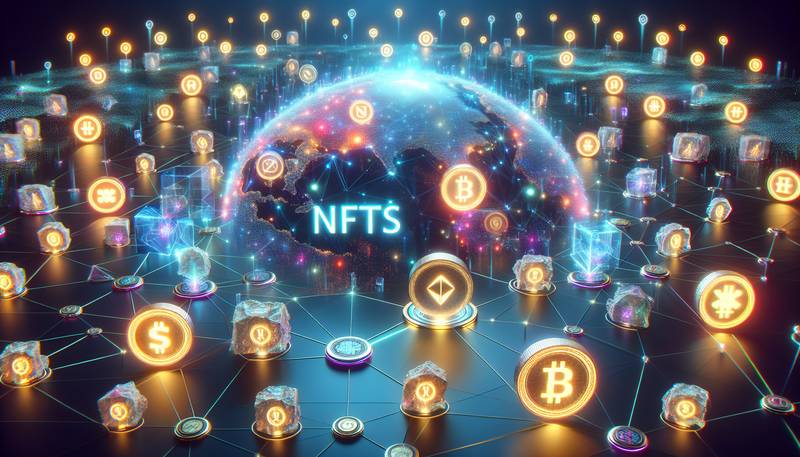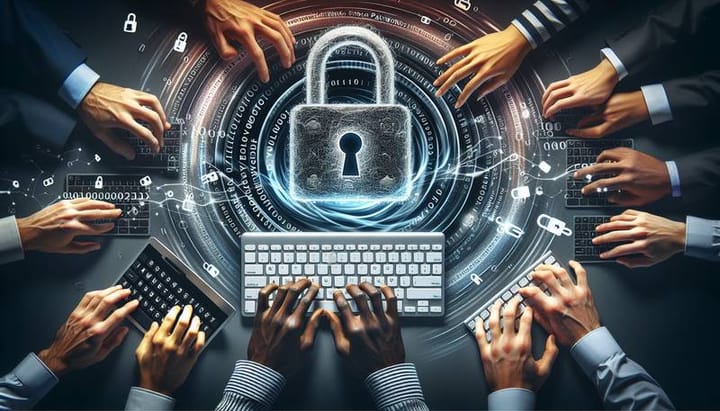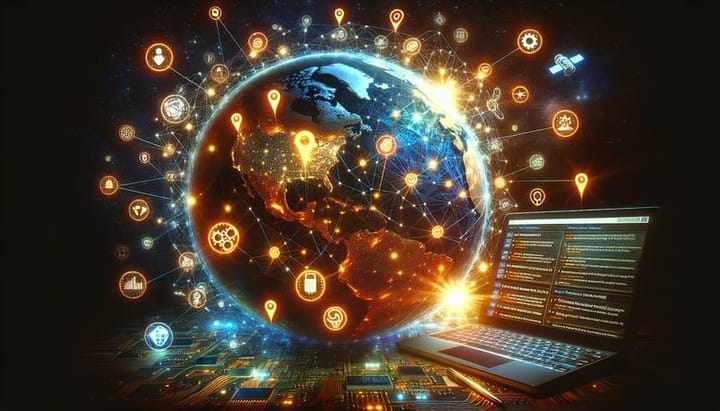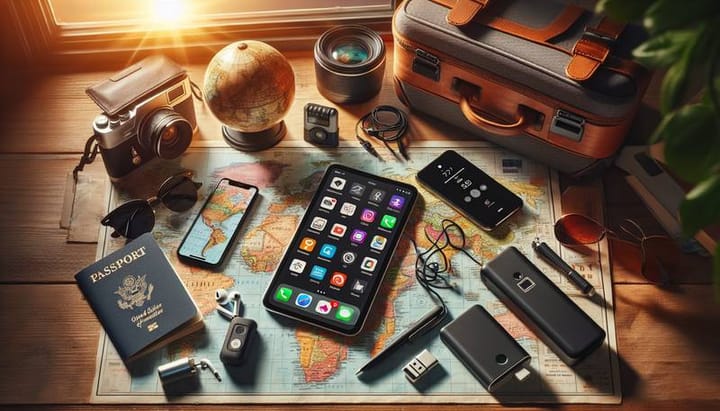NFTs Explained: What They Are and How They Work

Hold onto your digital hats, because we're about to embark on an adventure into the curious world of NFTs, or non-fungible tokens. If that term has you picturing a magical coin that grants wishes, you're not too far off — these digital assets are transforming the way we think about ownership and art in the internet age. From jaw-dropping auction sales to tweets turned into collector's items, NFTs are making headlines and sparking imaginations. But what exactly are they? How do they work? And why are people willing to spend their hard-earned money on them? Grab your virtual magnifying glass, and let's investigate!
The ABCs of NFTs
NFTs, or non-fungible tokens, might sound like something out of an economics textbook, but they're actually quite an intuitive concept once you break it down. The term "non-fungible" indicates that these tokens are unique and cannot be replaced or interchanged. Unlike cryptocurrencies such as Bitcoin, which are "fungible" and can be traded one-for-one, each NFT has a distinct value and digital footprint. Think of them as one-of-a-kind digital snowflakes, each with their own set of properties and value.NFTs can be anything digital — a piece of art, a meme, a snippet of a song, or a virtual real estate in a digital world. But what makes them special is their indisputable proof of ownership. When you buy an NFT, what you're really purchasing is a verified digital certificate that states you own a specific, original copy of a digital file, much like owning an original painting or sculpture. These certificates are recorded on a blockchain, which serves as a permanent ledger, making it nearly impossible to alter ownership or copy the asset in a way that would detract from its value.But what's really fascinating about NFTs is that they allow digital artists and creators to monetize their work in ways never before possible. For the first time, digital art can be sold as a unique piece without the risk of it being endlessly replicated across the internet. This has led to a renaissance in digital art and has provided a new revenue stream for creatives of all types.
Blockchain: The Digital Chassis of NFTs
Think of the blockchain as the engine that powers the NFT vehicle. For the uninitiated, blockchain is a glorified database — a decentralized and distributed ledger that records transactions across many computers, ensuring that the record cannot be altered retroactively without altering all subsequent blocks. This underpins cryptocurrencies like Bitcoin and Ethereum (the latter of which is most commonly used for NFT creation and trade).When an NFT is created, or "minted," it's forever recorded on the blockchain with its own unique code and metadata that distinguishes it from every other token. This includes details about the NFT's origin, ownership history, and authenticity. Every transaction made with that NFT is similarly recorded, so there's a transparent and unbroken chain of custody that helps establish its provenance and secures the ownership rights of the digital asset. This immutability is what makes NFTs a game-changer in the digital space.Because the blockchain is decentralized, it doesn't rely on a single server or company to function. This spreads out the data and makes NFTs resistant to hacking, fraud, and data loss. As long as the blockchain exists, your NFT exists. And since there's no central authority overseeing the blockchain, it provides a level of independence and autonomy for artists and creators that's pretty empowering.
Why NFTs Aren't Just Digital Fairy Dust
You might still be scratching your head, thinking, "Okay, so some digital art sold for millions — so what?" The "so what" is the revolution in how we perceive and value digital assets. In our increasingly digitized world, NFTs have opened a new frontier in how ownership and originality are defined and traded.For one, scarcity plays a significant role in an NFT's value. Since each NFT is one-of-a-kind, it can create the same type of scarcity as a rare painting or a limited-run collectible. Next, there's the aspect of collectability; some people buy NFTs merely for the pleasure of owning a digital asset they adore, knowing it's genuinely theirs and nobody else's (officially, at least).Furthermore, there's the idea of investment. Like physical art, the value of an NFT can appreciate over time. When you purchase traditional art, you're betting on its value increasing; similarly, NFT buyers are often speculators, hoping their digital asset will soar in value as the market matures.But more profoundly, NFTs speak to a new movement of authenticity and ownership in the digital space. The certificates provided by the blockchain offer a sense of physicality and tangibility to something inherently non-physical, echoing the act of possession in the real world.What's particularly intriguing is that NFTs also facilitate a direct connection between artists and patrons, disrupting the traditional gatekeeping model of art sales and distribution. This is powerful — it tears down the walls of elite art galleries and auction houses and democratizes art on a global scale.
Exploring the NFT Marketplaces
So, let's say this talk of non-fungible wealth has piqued your interest, and you're ready to dip your toes into the NFT market. Where do you start? The first step is to peruse the bustling digital bazaars known as NFT marketplaces.Each marketplace has its own vibe and specialty. Some are like the digital equivalent of a high-end art auction, catering exclusively to the rarest and most sought-after NFTs. Others are more like a global crafts fair, with a wide variety of digital goods up for grabs. And there are even game-centered platforms where you can buy and sell virtual goods and properties for online games and worlds.To transact on these platforms, you'll need a digital wallet, and most likely, some cryptocurrency, as many NFTs are priced in Ether (the currency of the Ethereum blockchain). It's worth noting that the process can be somewhat gas-intensive—not the kind you put in your car, but the transaction fees on the blockchain, which can be high during periods of network congestion. Still, if you're an artist or a potential collector, these marketplaces are where the magic happens. They're the hubs of the rapidly expanding NFT universe, and they provide exciting opportunities to support digital creators and potentially invest in the next big thing. Whether you want to mint your own NFT or browse existing collections for your first purchase, the marketplace is your first stop.
NFTs Gone Viral: From Celebrities to Memes
Part of the reason NFTs have exploded in popularity is their viral nature on social media and the celebrity backing they've received. High-profile artists, musicians, and even athletes have jumped on the NFT bandwagon, creating and selling their own unique digital assets. From Grimes selling her digital art collection for millions to NBA Top Shot clips trading like rare basketball cards, NFTs have become the new autograph — a digital signature of sorts.The NFT phenomenon isn't confined to the realm of celebrity, either. Take the example of 'Nyan Cat' — a simple GIF of a feline with a pop-tart body, which sold as an NFT for a whopping amount. Or consider Twitter's CEO, Jack Dorsey, who sold his first tweet as an NFT for the value of a luxury car. These instances illustrate that almost any digital content could potentially become an NFT, leading to a sort of gold rush for viral memes and internet moments.This trend has birthed a new wave of digital nostalgia, as people seek to own a piece of internet history. It taps into the same impulse that has us collecting vinyl records or vintage comic books. But, before you rush to turn your favorite GIF into an NFT, remember, the market is still fresh and wildly unpredictable. The line between a profitable investment and a worthless digital asset can be thin, and it shifts with the ebb and flow of public interest and market trends.
Pros and Cons of Investing in NFTs
If you're considering an NFT as an investment, it's crucial to weigh the potential risks and rewards. On the plus side, NFTs represent a new frontier in digital ownership, and their uniqueness and verifiability could make them highly valuable over time. As the market develops, early adopters may find themselves in possession of digital assets that gain in significance and worth.Yet, NFTs come with their fair share of risks and criticisms. The market is still in its infancy, and like any emerging space, it's marked by volatility. Prices can skyrocket — and plummet — in the blink of an eye. Additionally, there's the environmental concern. The energy consumption of the blockchain technology underpinning NFTs has come under scrutiny, raising questions about the sustainability of the current model.Further, while the blockchain provides security, it's not foolproof. Scammers have found ways to exploit the hype, creating counterfeit NFTs or selling digital art without the creator's consent. As such, due diligence is crucial when buying or minting NFTs, ensuring that what you're getting is both authentic and ethically sourced.Investing in NFTs can be exhilarating, promising to reshape the playing field for creators and investors alike. But it is not for the faint-hearted. It requires a willingness to stomach uncertainty and to embrace a rapidly changing landscape. As with any investment, never put in more than you can afford to lose, and always do your research.
The Future of NFTs: A Lasting Impression or a Passing Craze?
So, what does the future hold for these digital darlings? It's hard to say for sure, given the nascent stage of this market. There's a great deal of excitement and speculation, paired with a healthy dose of skepticism. We could be witnessing the beginning of a new era in art and digital ownership, or this could be a bubble that's ready to burst at any moment.What seems clear is that NFTs have struck a chord in a culture increasingly focused on digital life. The potential applications of NFTs are vast, from revolutionizing the music and film industries to changing the way we think about collectibles, gaming, and even virtual real estate and identity.One thing is certain: the conversation around NFTs has opened up new possibilities for the intersection between technology, art, and commerce. It has provided a platform for artists to gain recognition and compensation for their digital works, offering a new advantage in the global digital economy.As technology advances and awareness grows, we may see NFTs become less of a curiosity and more of a commonplace element in our digital lives. Or, they could go the way of the Beanie Babies, treasured today only by a select few enthusiasts. Only time will tell.
And there you have it — a deep dive into the digitized rabbit hole of NFTs. Whether you're a creator, collector, or simply an intrigued onlooker, it's undeniable that NFTs have stirred the pot of the digital economy, reshaping our understanding of ownership and value in the internet era. As we continue to embrace our online lives, NFTs are a fascinating testament to our evolving relationship with the digital world.At their core, NFTs are about connection — to art, to technology, and to each other in new and dynamic ways. They remind us that even in a digital landscape, provenance, creativity, and ownership have tangible meaning. So, whether you jump in with both feet or watch from the sidelines, keep your eye on the world of NFTs. They may just be one of the defining facets of the digital age.


